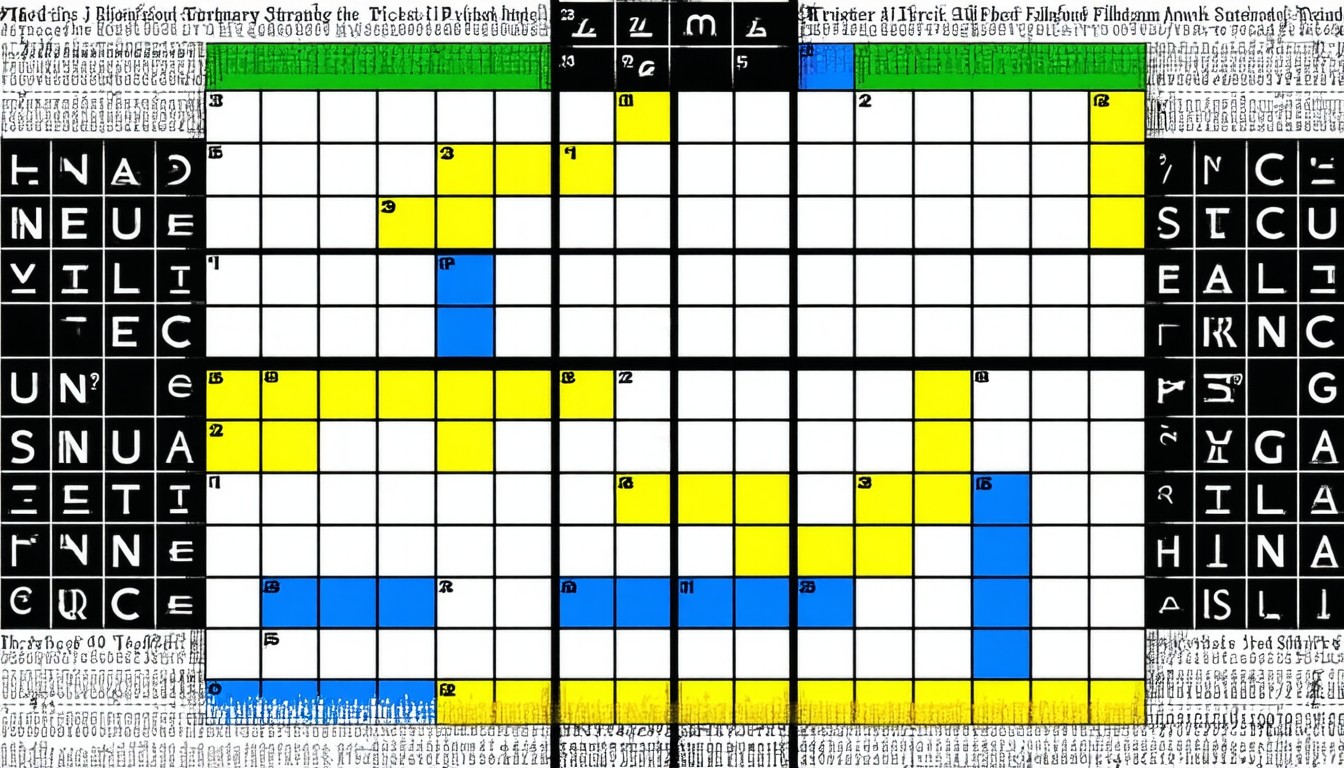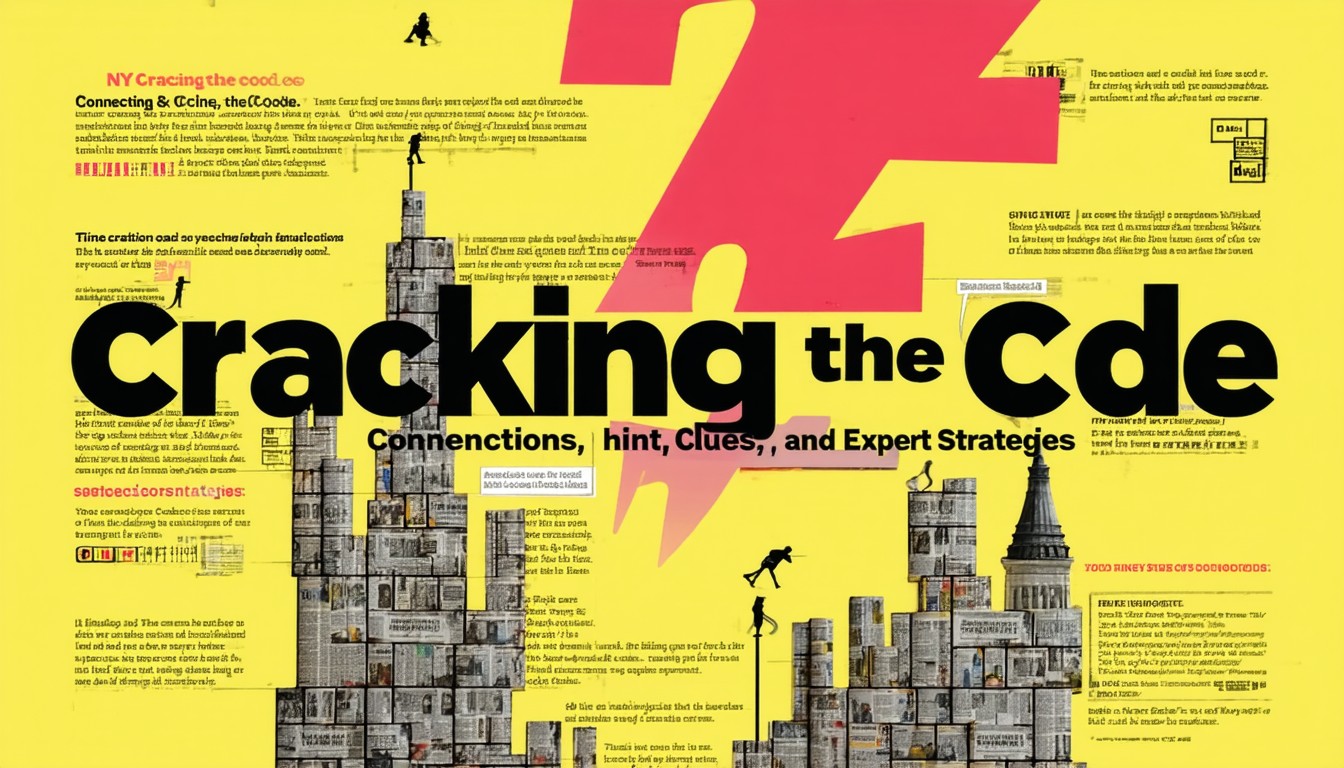In the digital age, puzzle games have transcended the boundaries of newspapers and entered a golden era online. The New York Times (NYT), a trailblazer in this transformation, has found new audiences—and new levels of obsession—with its suite of daily puzzles. Among the most innovative additions is NYT Strands, a visually engaging word puzzle that’s rapidly capturing minds. Unlike traditional crosswords or Wordle, Strands challenges players to uncover hidden word paths within a grid, demanding both lateral thinking and agile pattern recognition.
This immersive puzzle is more than just a time-filler; it’s become a genuine daily ritual for many. According to industry analyses of mobile and digital gaming, word puzzles like Strands are enjoying robust double-digit growth, with retention rates that rival the most popular gaming apps. But for beginners and veterans alike, navigating the clues and constraints of Strands can be tricky. Unlocking its secrets requires not only vocabulary prowess, but also strategy and a willingness to think outside the box.
How NYT Strands Works: The Basics and Beyond
NYT Strands is structured around a simple but deceptively complex premise. Players face a grid filled with seemingly random letters. The objective is to find themed words hidden in consecutive, touching tiles—often winding and intersecting like tendrils. Each puzzle is accompanied by a theme or clue, which points to a central idea connecting every answer.
Scoring and Gameplay Features
- Themed Words: All answers relate to the puzzle’s daily theme.
- Spangram: A special word that often connects opposite sides of the board and ties directly to the theme.
- Hints: Each puzzle offers a limited number of hints, often unlocked by finding certain non-thematic words.
Unlike traditional crosswords, Strands words can snake around the grid in every direction—including diagonally. This freedom makes every board a new landscape, where obvious patterns are rare and misdirection is common.
The Role of Daily Themes
Themes are the heart of Strands’ complexity. Rather than relying only on direct definitions, players must interpret broad prompts ranging from “In the Kitchen” to “Dance Moves.” This pushes solvers to draw on associative thinking, pop culture knowledge, and lateral logic. The NYT has cultivated a reputation for clever, occasionally playful themes that reward curiosity and persistence.
Essential NYT Strands Hints: What Every Player Should Know
Maximizing success with NYT Strands starts with understanding how to draw inspiration from the puzzle’s own structure. Experienced solvers have identified several strategies that consistently deliver results, whether tackling simple or fiendishly tricky grids.
1. Begin with the Theme, Not Individual Words
Before touching the grid, spend time with the daily theme. Ask yourself:
- What broad categories fit the clue?
- Which related words are most likely to appear in a limited grid space?
By brainstorming a short list of possible answers, you prime your brain to recognize connections that aren’t instantly obvious.
2. Scan for Unusual Letter Combinations
Experienced players note that rare letters (Q, Z, X, J) or double letters often form anchors in a Strands grid. If you spot these, check if they connect with other theme-relevant letters or mirror part of your brainstormed words.
3. Trace All Possible Paths—Forwards and Backwards
Strands allows for diagonal and twisting movement, so even familiar words can appear in unexpected shapes. Trace possible routes in both directions, especially for longer themed entries or the unique “spangram” word that spans the grid.
“The key to mastering Strands is treating the puzzle like a maze, not a crossword. Flexibility and visualization can turn a dead-end into the start of a solution.”
— Marisa Garcia, language games columnist
4. Use Hints Strategically
Hints are precious and limited. Unlock them only after exhausting your brainstorm; they’re most useful for confirming a theory or breaking a mental logjam. Remember, each found non-theme word can open up more hints, encouraging exploratory play.
Advanced Strategies: Outsmarting Tricky Strands Grids
Most Strands puzzles include clever misdirects or ambiguous word paths. These features are designed to stump even seasoned solvers, but specific tactics can tip the balance in your favor—and help you finish faster.
Recognize the Spangram’s Signature
Spangrams—special words connecting two sides of the puzzle—usually relate most closely to the daily theme and are frequently the longest entry. Their placement often unlocks multiple other words, making them a high-value discovery early on. When stuck, look for central paths that wind through populated parts of the grid.
Harness the Power of Cross-checking
Because Strands answers frequently intersect or border each other, finding one answer will often reveal starting letters for others. When you successfully highlight a word, immediately scan its adjacent tiles. This not only jumps you ahead in the puzzle but also reduces missteps that sap precious hints.
Experiment with “Partial Paths”
Some letters or short runs may initially not form a full theme word but match several possibilities. Keep track of these “partial paths” on paper or mentally—they often become crucial when fresh eyes reveal new connections.
The Psychology and Neuroscience Behind Strands
Word puzzles like NYT Strands are more than just play—they’re a cross-training exercise for the brain. Research from cognitive science and neuropsychology has consistently demonstrated that regular engagement with puzzles can improve memory retention, executive function, and creative problem-solving.
One study published in Frontiers in Aging Neuroscience found that adults who engaged daily in visual word puzzles showed “significant improvement in lexical retrieval and mental flexibility.” Games like Strands, which combine spatial reasoning with language, may offer unique benefits by engaging multiple brain networks simultaneously.
Beyond individual benefits, communities spring up around daily puzzle culture—Twitter, Reddit, and Discord host thriving Strands spoiler threads, solution breakdowns, and leaderboard competitions. These shared spaces not only boost staying power but also solidify the NYT Strands’ reputation as more than just a solitary pursuit.

Real-World Examples: How Puzzle Pros Tackle Tough Strands
Consider the experience of puzzle enthusiast Jordan Lin, who recounts solving a recent Strands challenge themed around “Garden Delights.” While initially stuck, leveraging the unique pathing of the grid unlocked the spangram “VEGETABLES,” which then revealed “PEA,” “BEET,” and “LEEK” in quick succession.
Many veteran solvers recommend collaborative play for especially tough grids. Livestreamers on YouTube and Twitch often solve Strands puzzles live, providing running commentary and exposing viewers to a variety of creative approaches. These sessions have taught thousands of fans the subtle art of “turning failed paths into future solutions,” with missteps regarded as valuable learning moments rather than wasted moves.
Conclusion: Taking Your NYT Strands Game to the Next Level
NYT Strands isn’t just a daily diversion—it’s a test of wit, observation, and perseverance. Whether you’re tackling your first puzzle or aiming for a personal record, remember the fundamentals: interpret the theme broadly, manipulate paths flexibly, and leverage hints wisely.
Continuing to push your solving tactics, stay engaged with both puzzle and community, and treating every “defeat” as a warmup for tomorrow’s challenge turn the solving process into long-term growth. For those willing to embrace the game’s evolving complexity, the rewards are both intellectual and deeply satisfying.
FAQs
What are NYT Strands hints and how do they work?
NYT Strands hints are built-in clues that can help you solve challenging sections of the puzzle. They are unlocked by finding non-theme words or at key points in the game, making strategic use important.
How is NYT Strands different from regular crosswords?
Strands puzzles are visually oriented and allow words to twist and turn—sometimes diagonally—across the grid, rather than fitting rigidly into across/down boxes like traditional crosswords.
What’s a “spangram” in NYT Strands?
A spangram is a special word that typically connects two edges of the grid and is closely tied to the daily theme. Finding it often reveals or unlocks other theme answers.
How can I improve my speed in solving Strands puzzles?
Start by brainstorming words based on the theme, look for uncommon letters, and be willing to trace paths in multiple directions. Practicing these strategies builds both speed and accuracy.
Do I need a large vocabulary to succeed at NYT Strands?
While a strong vocabulary helps, many solutions are based on pattern recognition and flexible thinking. Familiarity with common themes and willingness to experiment often matter more than word list memorization.
Are there resources or communities for Strands enthusiasts?
Yes. Online forums, Discord servers, and YouTube streams feature daily discussions, spoiler threads, and collaborative solving, making it easy for fans to share hints and celebrate wins together.





